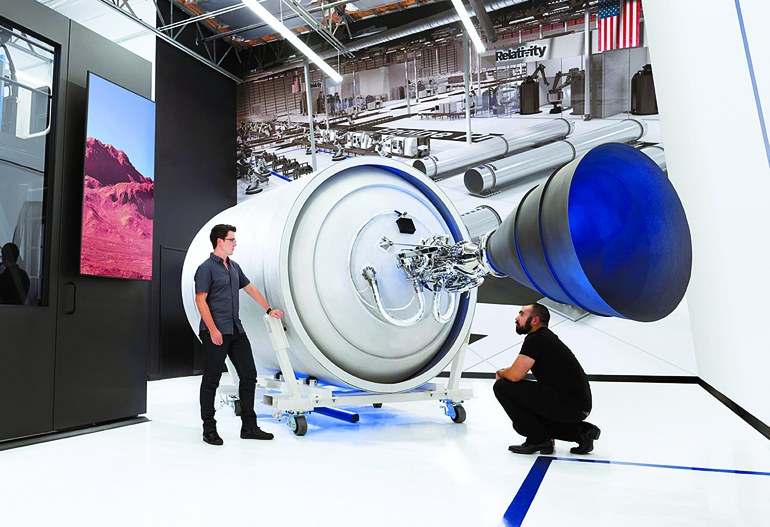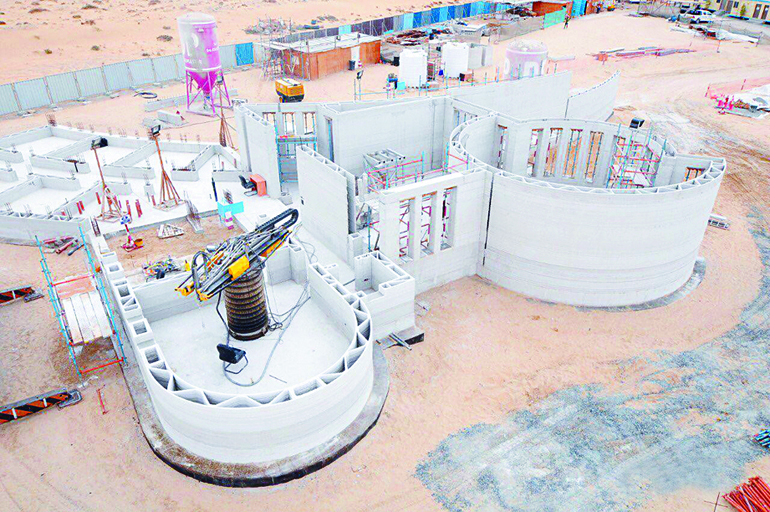
Latest News
- Hyundai E&C Accelerates Global Nuclear Expansion into the U.S. Nuclear Market
- Hyundai E&C Shifts into High Gear to Enter Nordic Large-Scale Nuclear Market
- Hyundai E&C Strengthens Korea-Japan Cooperation in Energy Transition and New Growth Businesses
- Hyundai E&C Signals Green Light for Large-Scale Nuclear Power Plant Business in Europe
- Hyundai E&C Unveils Energy-driven Growth Strategy “H-Road”
3D Printing Applications: From Space Rocket to Blood Vessels of Fetus
3d printing, which is the core technology of the 4th industrial revolution, is gaining momentum in diverse sectors with its rapidly growing global market of 26 trillion won.

[The space rocket is being built by the U.S. company Relativity Space.]
More Commercial Applications Based on Acceleration, Agglomeration and Diversification
The world-renowned journal <Nature>, highlighting that 3d printing technology has developed into a new level, introduced a 3d printer developed by Professor Chad Mirkin at Northwestern University in the US. The major different between the novel printer and the conventional ones is that the former successfully built a 30cm large, wide and 1.2m high large structure at an extreme printing speed. This is almost one thousand times faster than other originally launched 3d printers. Moreover, materials are evolving from plastics into metals, to the point of printing living cells.

[Apis Cor builds World's largest 3D-Printed building in Dubai.]
Knocking Together a Human-Sized Structure
3d printers, which have showed quite a stagnant growth over the past few decades, are rapidly changing these days. Firstly, thanks to acceleration, last October, Professor Chad Mirkin disclosed a high-speed printer capable of printing 43cm per hour in a global journal <Science>. It sheds the conventional printing approach of a step-by-step layered accumulation and hardening of materials. Rather it shoots a beam of light as the three-dimensional drawing onto a transparent tank with a synthetic resin solution, hardening at once while printing upward. Professor Mirkin explained that this novel printer can build an object as tall as a human in just a few hours, which is 100 times faster than conventional printers.
Hanging Nozzle in the Air to Overcome Size Restraint: 3d printed objects are also growing in size. Now, 3d printers can print just about anything from buildings to bridges…from ships to space rockets. Last year in October, a two-story government building opened doors in Dubai. From outside, it looks like any other building, but was recorded as a milestone in the history of technological developments in the scientific circles. It is the world’s first 3d printed building with a total floor area of 640㎡. It works by using a nozzle and spraying, by depositing and hardening layers of recyclable construction materials, cement, plaster just like a prototype manufacturing printer. The difference is the size. Apis Cor overcame the size constraint by hanging a nozzle and making it move up and down, left and right. A 3d printed construction can save up to 70% of construction labor and 90% of costs.

[World’s Longest 3D-Printed Bridge Unveiled in China.]
Applications in Buildings, Bridges, Ships to Space Rockets
Applications are become diverse as well. Professor Xu Weiguo from the Tsinghua University showcased a 3d printed 26m long concrete pedestrian bridge in Shanghai in January last year. It was modeled after an ancient bridge built 1400 years ago and cost only 2/3 of constructing a conventional bridge. Aerospace companies like Boeing, Rolls-Royce, and Pratt & Whitney are also manufacturing airplane components like jet engines and wings with 3d printers. US-based Relativity Space is manufacturing an entire space rocket with a 3d printer, and this rocket is planned for launch in 2021 loading a 1.25t cargo.
Evolution into 4d Printer and Bio-Printer
“4d printing” technology changing according to time is also the focus of attention. In 2018, researchers at the Swiss Federal Institute of Technology Zürich and US California Institute of Technology built a small submarine with a 3d printer. The submarine is equipped with paddles on the left and right, and since the submarine is printed in synthetic resin capable of changing forms according to temperature, it can paddle and move on its own in warm waters. 4d printing technology is also used in automotive and medical sectors. A safer driver’s seat is an example, which in case of an accident can harden to protect the driver from the collision. In the medical sector, stents, generally used for expanding blood vessels, can straighten as a result of the body temperature. European researchers used the 4d printing technology last year to develop a micro-stent. In Korea, 3d printers have already been used to print titanium-based artificial bones to be implanted in patients’ jaws or skulls. Bio-printers using living cells have also emerged. Many Korean and foreign companies are currently conducting clinical trials to print tissues or cornea in 3d to be implanted into human skin. The ultimate goal of a bio printer is to produce organs like heart or kidney. Last year in April, researchers at Israel’s Tel Aviv University used a 3d printer to make a mini-heart consisting of human cells. The research team mixed stem cells with hardening gel and 3d printer’s bio ink, to deposit layers and fabricate a heart with 20㎜ height and 14㎜ diameter. However, it is not so simple to print a real-size organ. Organs are composed of dozens of cells, therefore it is not even easy to make an ink. Nevertheless, it is with much hope that technology saving peoples’ lives with artificial organs will soon be realized.
Wirte by. Lee Young-wan <Chosun Newspaper> reporter

